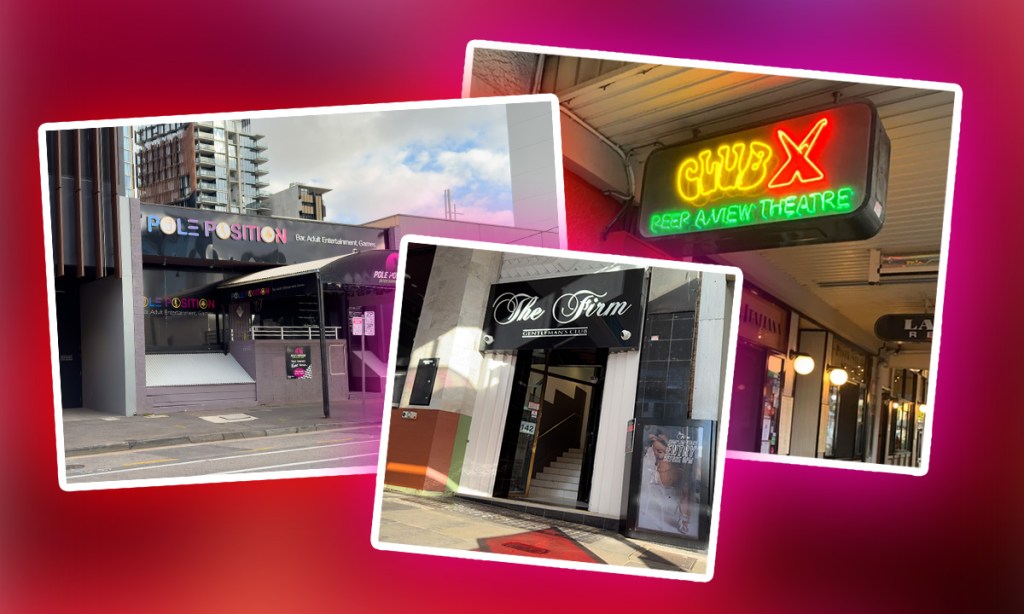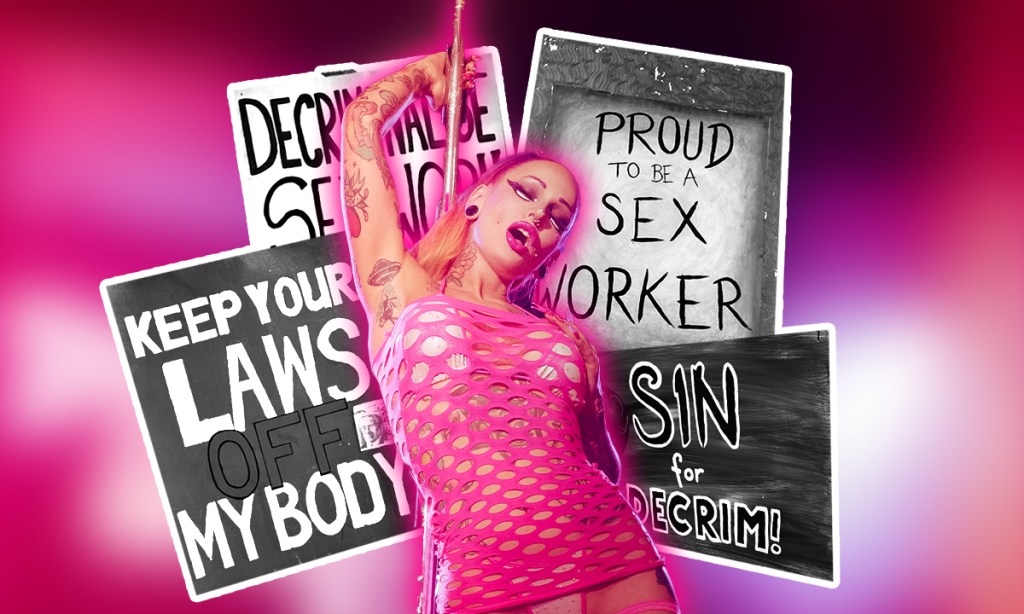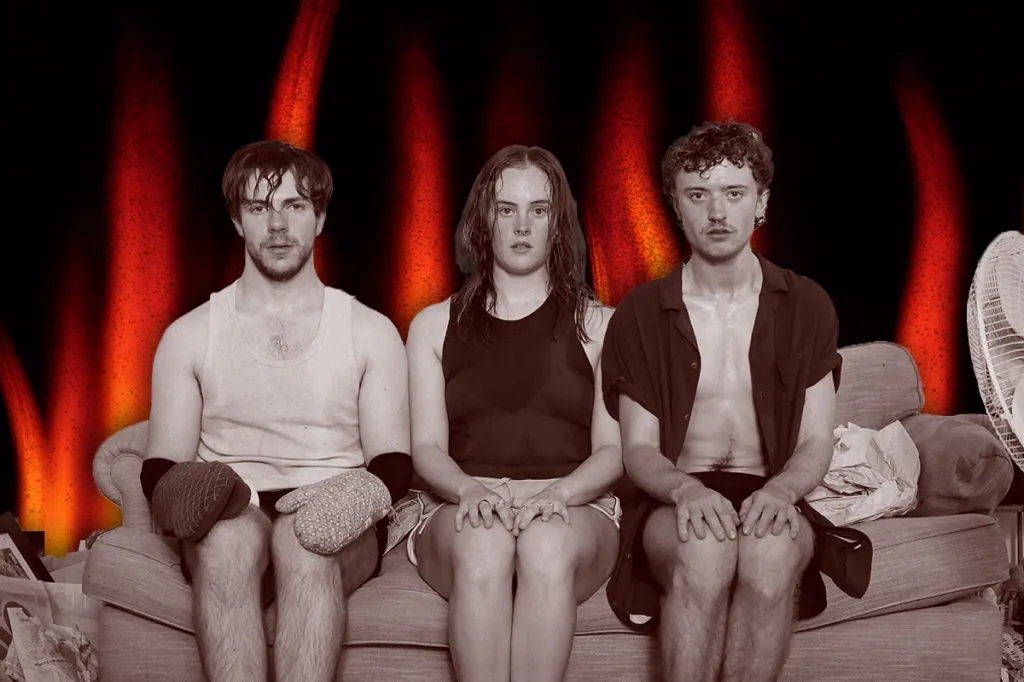Council walks back strip club buffer zones

The Adelaide City Council said it’s a misunderstanding that their proposed changes to the planning code would create a red-light district on Hindley Street.
South Australia’s Sex Industry Network (SIN), and two West End traders’ organisations told the council they were concerned its planning code changes would sanction a red-light district on Hindley Street.
This feedback was in response to the council’s planning code amendment which would limit new adult entertainment venues (like strip clubs) and adult product shops from opening in certain areas.
Under the draft proposal to change the planning code, it looked like new strip clubs would only be allowed to open in the Hindley Street precinct and not within 50 metres of a place of worship, school or childcare centre.
Existing venues will be able to continue operating, with the code only addressing new development applications.

This map outlines the proposed planning changes, with the stars marking existing or approved venues. Applications for new venues in the pink and yellow areas must adhere to specific policies and buffer distances. Adult venues would be restricted in the red and green areas.
The Adelaide West End Association said “it is crucial to understand that the West End is not merely a nighttime adult economy and it never in truth has been”.
“It is at its best a genuine mixed-use community and at its worst a street of empty shops; it is a vibrant and diverse community that deserves equitable consideration to rest of the city,” their letter said.
SIN’s feedback discussed the effect a red-light zone would have on their industry, writing, “the creation of a red-light district perpetuates stigma and discrimination, as workers within red-light districts are often pathologized, pitied, and seen as victims”.
West End traders and SIN were among 36 submissions the council received, with diverse views on how the council should manage planning applications from adult venues and shops.
Some feedback was in support of the code, with individual community members, the East End Presiding Officer Group and the North Adelaide Society suggesting the 50-metre buffer from churches, schools or childcare centres should be extended to 100 or 200 metres.
You might like

SIN said the implication that being located close to a sex industry business is ‘undesirable’ or ‘dirty’ is a regressive idea that perpetuates stigma and discrimination.
At last night’s City Planning, Development and Business Affairs Committee meeting, the council discussed this feedback and decided to change the way they presented a “buffer zone” in the policy and instead write detailed criteria for how new venues and shops will be assessed.
Councillor Phillip Martin said this debate “probably needs to go on a bit longer” given the complexity of the issue, and the misunderstanding in the community.
“I do understand that these adult entertainment premises and adult product shops are part of our society, there’s no question about that, they are legitimate businesses,” Martin said.
“I would certainly welcome the opportunity to consider a broad range of options, rather than just amending the code to providing language for what we were previously proposing as a buffer zone.
“I think it’s a much more nuanced discussion that we need to have, a much broader discussion in some ways.”
Director of City Shaping, Illia Houridis said they were using buffer zones as a “spatial tool” and they met with SIN after the consultation closed to discuss this further.
“We were able to talk them through the code amendment process and their view changed substantially when they realised this was about policy setting,” he said.
“The applications could be anywhere and it was important to say this is a land use conversation, in no way is this looking to talk about any regulation of a particular sector or industry.”
SIN General Manager Kat Morrison told CityMag “SIN appreciates the Adelaide City Council’s willingness to meet with us and unpack the complexity and nuance in the code amendments”.
“While some of our concerns were assuaged, we are still worried about the lens, moral or otherwise, that may be applied by some councillors when assessing adult entertainment establishment applications.”
In August, SIN told CityMag their concerns include safety, the duopoly of venue ownership, the economic landscape and how the language of the code is outdated and implies sex work will always be criminalised in South Australia.

There is currently only one adult entertainment venue in the East End of the city; Pole Position on Pirie Street. This picture: Tony Lewis/InDaily
The council’s planning code review came about in 2023 after the state government’s Planning and Design Code was updated to include a specific definition for “adult entertainment premises” instead of just “licensed premises”.
Subscribe for updates
This meant that if a bar or club changed to a strip club it would be defined as a land use change under the planning code and would need approval.
Adelaide MP Lucy Hood advocated for this change and wrote to Lord Mayor Jane Lomax-Smith last year asking the council to consider restricting adult entertainment developments specifically in the East End.
In her feedback on the draft code amendment, Hood wrote that “the City of Adelaide’s proposed Code Amendment went further than this, proposing a Code Amendment for the entirety of the City of Adelaide, including a specific zone for Hindley Street”.
“It is important to note that this was a decision of council and not a policy action local residents or I called for. Our focus has been entirely on the East End of the CBD.”

New applications for adult entertainment venues would also be limited in how they can advertise. This picture: The Firm, North Terrace. Tony Lewis/InDaily.
The planning code changes would also require Adult Entertainment venues to have limited advertising and discrete advertising, which most feedback was generally supportive of.
Since 2021, there have been three applications for adult entertainment premises and one for an adult product shop in the city.
Two of these venue applications were for locations on Hindley Street, one on Currie Street and the adult product shop applied to be located on O’Connell Street.
Councillor David Elliott said given how seldom these businesses pop up, he doesn’t see why it’s a big problem and is “unsure” about what function a buffer zone and visually suppressing these venues with strict criteria will have.
“I don’t like the idea that we’re making code amendments based on a particular moral code or an uncomfortability with adult activities or sex in general, I don’t think that should be something that comes into planning,” Elliott said.
Councillor Henry Davis is in favour of the original buffer zone model and said it gives “a clear indication of where adult entertainment venues can occur and where they don’t”.
Davis said this is helpful for developers or business owners who may want to put up residential apartments or invest in a family restaurant and not want an adult venue or shop to pop up next door.
Councillor Mary Couros disagreed with the buffer zone model.
“If we start applying buffer zones then we’ve got to start applying buffer zones for a lot more other things,” she said.
“Where are you going to stop and where are you going to start, maybe we should have buffer zones for where you put shishas.
“Maybe we should have buffer zones about no nightclubs in laneways that are impacting on smaller bars, how controlling are we going to be in the city?”
The council is going to consider the feedback and make changes to their planning code amendment, it’s expected to come back to councillors for a vote in November. It will then have to be approved by the Planning Minister.

